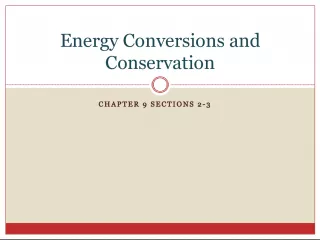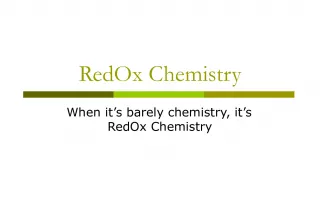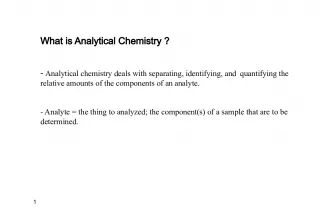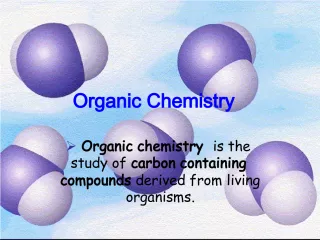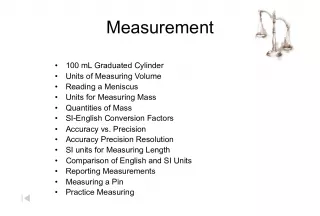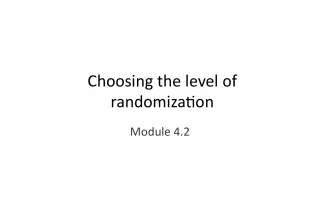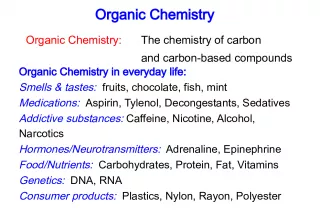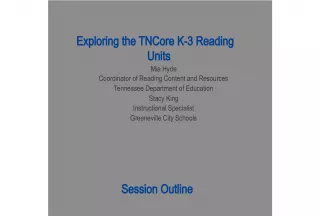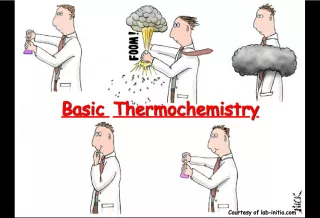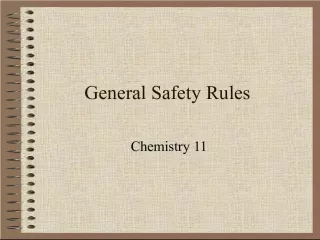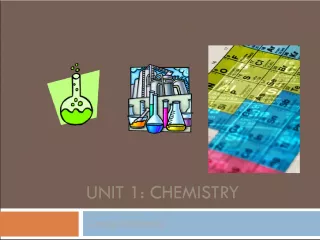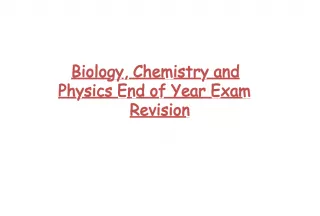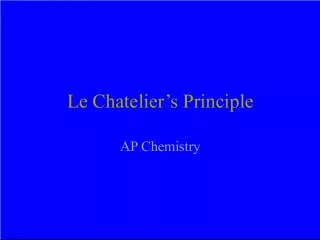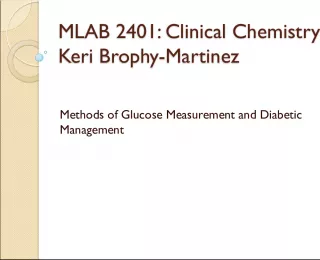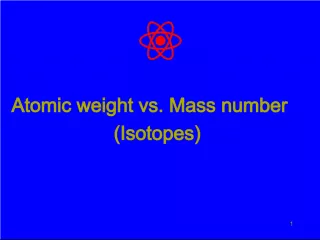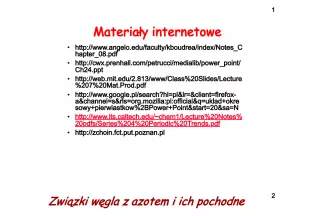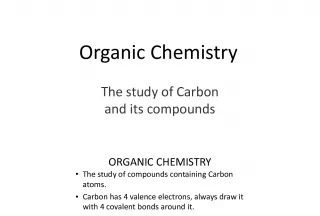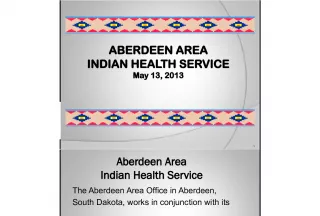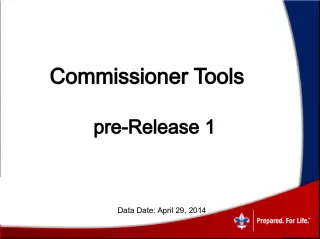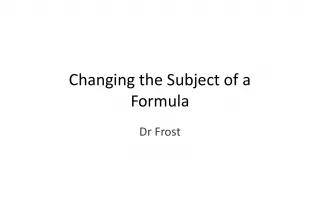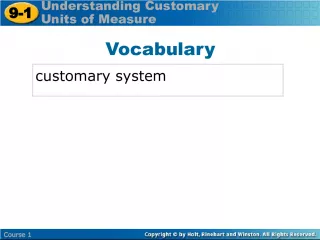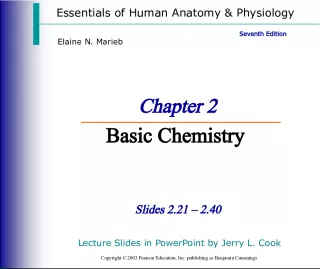Chemistry SI Units and Conversions
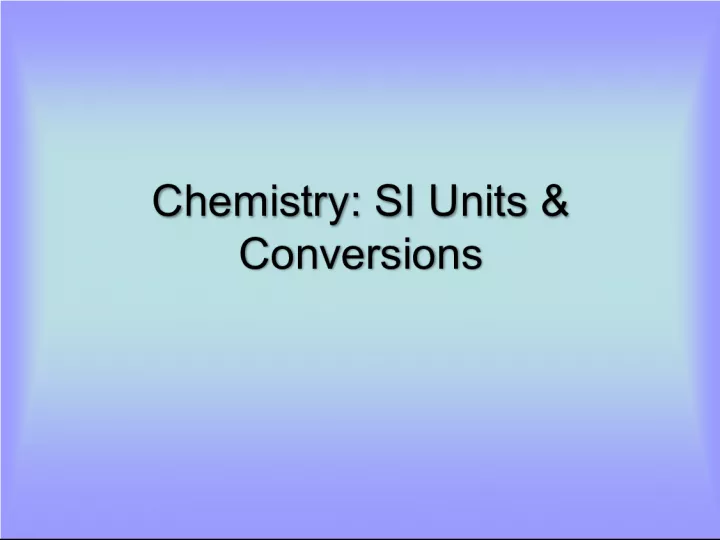

This article discusses the SI base units of measure commonly used in chemistry, including the time unit of second (s), length unit of meter (m), mass unit of kilogram (kg), and
- Uploaded on | 3 Views
-
 shane
shane
About Chemistry SI Units and Conversions
PowerPoint presentation about 'Chemistry SI Units and Conversions'. This presentation describes the topic on This article discusses the SI base units of measure commonly used in chemistry, including the time unit of second (s), length unit of meter (m), mass unit of kilogram (kg), and. The key topics included in this slideshow are . Download this presentation absolutely free.
Presentation Transcript
Slide1Chemistry: SI Units & Conversions Chemistry: SI Units & Conversions
Slide2SI Base Units of Measure commonly used in chemistry SI Base Units of Measure commonly used in chemistry • Time: second (s) • Length,distance: meter (m) • Mass: kilogram (kg) – In class, we consider the “base unit” to be grams. • Volume: liter (l) • Temperature: Kelvins (K) note: no degree symbol – In chemistry lab, we use the Celsius temperature scale. ( °C)
Slide3Derived Units Derived Units • A derived unit is one in which the units are combined mathematically. – Volume: cubic centimeter (cm 3 ) • (cm x cm x cm) – Area: square meter (m 2 ) • ( m x m) – Density: mass volume
Slide4Converting Celsius to Kelvin Converting Celsius to Kelvin Kelvins = C + 273 °C = Kelvins - 273
Slide5Prefixes for SI Units Prefixes for SI Units • P r e f i x e s f o r u n i t s s m a l l e r t h a n 1 : – m i c r o ( ) 1 X 1 0 - 6 o r – m i l l i ( m ) 1 X 1 0 - 3 o r – c e n t i ( c ) 1 X 1 0 - 2 o r – d e c i ( d ) 1 X 1 0 - 1 o r • P r e f i x e s f o r u n i t s l a r g e r t h a n 1 : – k i l o ( k ) 1 X 1 0 3 o r 1 , 0 0 0
Slide6Conversion Using the Factor-Labeling Method : (Dimensional Analysis) Conversion Using the Factor-Labeling Method : (Dimensional Analysis) Problem: Convert 32.05 cm to m Step 1 : write down the starting measurement: number and unit! Step 2 : Convert from this prefix to the base unit. (This means meters, liters or grams.) X Step 3 : Cancel the units that divide each other out. Step 5 If you have arrived at the target unit, you are done! Be sure to include the unit and significant figures in your answer! = Step 4 : Perform the math… divide by the numbers on the bottom, multiply by the numbers on the top! Starting unit Target unit
Slide7Practice!Practice! Convert 0.00450 km to cm X ? X = T h e c o r r e c t a n s w e r i s 4 5 0 c m , b u t t h a t ’ s o n l y 2 s i g f i g s … . ? ? ? ? ? U s e s c i e n t i f i c n o t a t i o n t o c o r r e c t t h e s i g f i g s ! 4.50 x 10 2 cm

